|
Wisley's Alpine Log
By Paul Cumbleton
Log 15 -- 17 July 2008
A couple of logs ago I showed Yucca baileyi and it's flowering stem going through the roof of our Landscaped House. The ultimate height was not what it might have been as unfortunately the wind broke off the top of the stem. It still made an impressive sight however when the flowers opened.
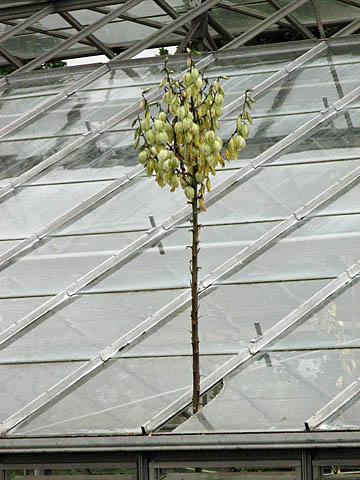
Yucca baileyi in flower
Those of you who came to our Hepatica Spectacular earlier this year will remember Lucie who looks after them. Lucie is also responsible for the Landscaped House that the Yucca grows in. At the moment the house in general is looking good with lots of colour and some interesting plants. The Cape forget-me-not, Anchusa capensis has been flowering for several weeks.
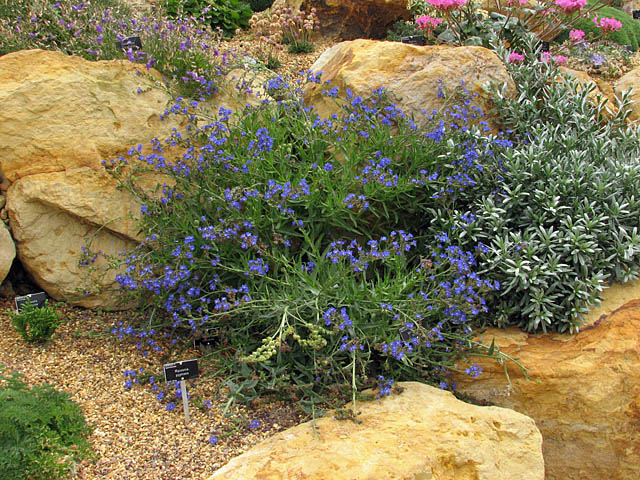
Anchusa capensis
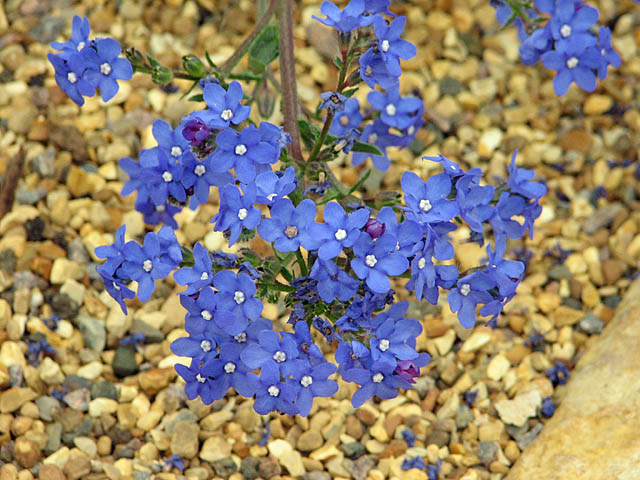
Anchusa capensis closer up
This grows across much of South Africa where, like many forget-me-nots, it is sometimes regarded as rather weedy. However I think it is actually a very attractive plant, having several branches to about a metre high covered with hundreds of azure blue flowers. Treated as a biennial, seed is sown in autumn and put in a cool but frost-free spot (just as you would for the winter-growing South African bulbs). It germinates quickly. We pricked them out into 7cm diameter pots and then planted into the Landscaped house once the roots had filled the pot. The picture shows just one plant, flowering in the spring/summer after sowing. Once the flowers are over, we will collect some of the copious seed to sow again this coming autumn. The parent will die and be removed to be replaced with its offspring.
Another blue-flowered (but much paler) plant that has had a long flowering period is Petromarula pinnata. This plant is endemic to Crete where it can frequently be seen growing out of rock crevices or old walls.
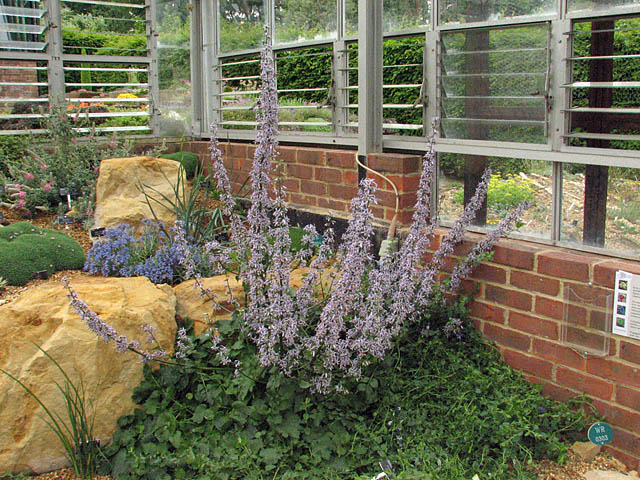
Petromarula pinnata
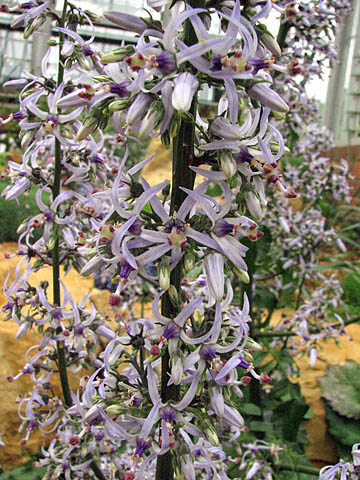
Petromarula pinnata close up
This plant has an intriguing trick up its sleeve - it gets the female parts of the flower to present the pollen to its pollinators! This is known as secondary pollen presentation. There are other plants that can also do this and there are differing ways of achieving it. In this case, it is the stigma that presents the pollen to pollinators. This is how it does it:
Figure 1 below shows on the left a young flower bud. On the right I have removed some petals to show the reproductive parts inside. At this stage you can see the male parts (anthers) and inside them, partly beneath them, the female organ (stigma).

Figure 1
The top of the stigma is covered in hairs and there are also sticky areas on the sides of it. You can see these hairs in the cut away flower shown on the left in figure 2 below. The anthers ripen before the flower opens, and shed their pollen onto their surface. At this stage it is blue in colour. When the anthers have shed their pollen, the style (which carries the stigma) elongates, pushing the stigma through the anthers. As they pass through, the hairs and sticky patches on the stigma collect the pollen that the anthers have shed. You can see this stage on the right of Figure 2 below.

Figure 2
The style elongates further, beyond the anthers and while it is doing this, the pollen turns a reddish-brown colour. This stage is on the left of figure 3 below. Eventually the stigma hits the end of the still-closed flower. This presses the pollen down firmly on the top of the stigma and between the hairs that cover it. Then the flower springs open while the style continues to elongate well beyond the now empty anthers. The hairs that have collected the pollen next actually shorten, while the sticky patches that have also collected pollen dry up. Both these events release the pollen and make it finally available to pollinators - in this case, usually solitary bees. This stage is shown on the right of figure 3.

Figure 3
All this time, the stigma has been in an un-receptive state so as to avoid self-pollinating, with its three lobes tightly pressed together. After a while, to give the chance for a bee to collect the pollen or wind & other factors to remove it, the three lobes of the stigma are forced away from each other exposing fertile, receptive surfaces ready to receive pollen from another plant at the next bee visit. This next picture shows this stage; if you look carefully you can see the three stigma lobes that have separated. Aren't plants amazing?

Figure 4
Back in May, the star of the show was Aloe humilis with its bright red spires:
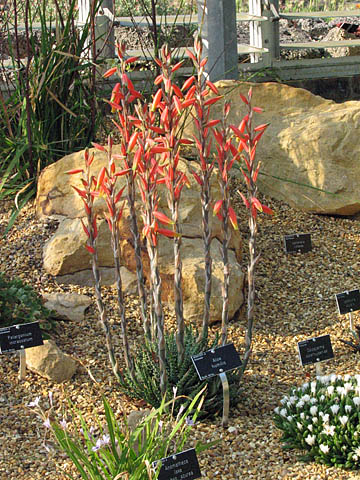
Aloe humilis
Waiting in the wings, another Aloe is budding up just now, Aloe ecklonis:
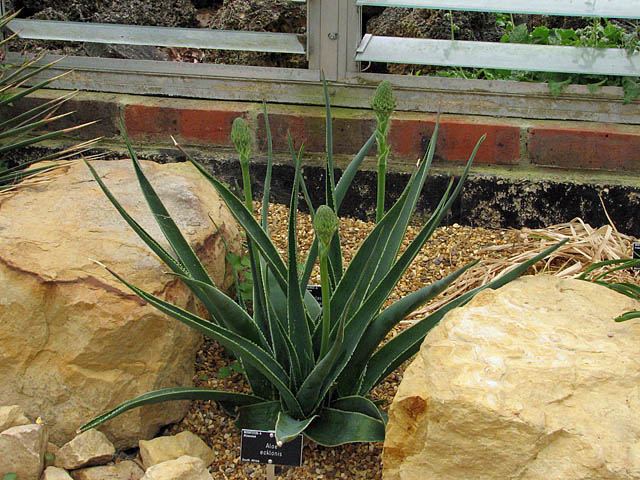
Aloe ecklonis in bud
The softer hues of Origanum 'Barbara Tingey' drape over a lump of tufa, contrasted with the yellow of a Corydalis lutea nearby:
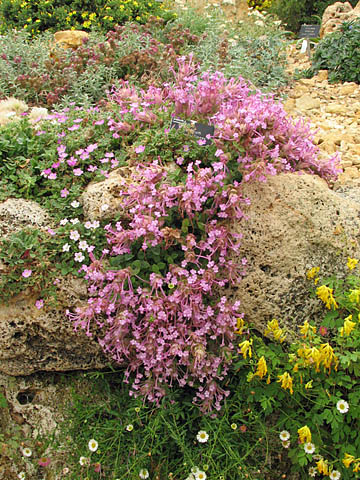
Origanum 'Barbara Tingey'
This Origanum is a hybrid between O. tournefortii and O. rotundifolium. Its late and long-flowering habit, together with ease of cultivation make it an excellent choice for a rock garden or raised bed. Cuttings root easily if taken from young growth in spring.
Pelargonium endlicherianum is also looking wonderful. This native of Turkey and Syria is pretty hardy but winter wet can be a problem. So our Landscaped house which keeps off the rain, but in which we have no heat, is an ideal spot for it.
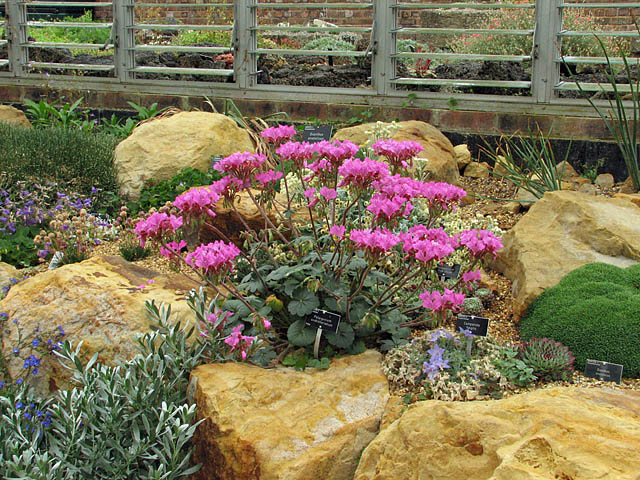
Pelargonium endlicherianum
The same can be said for the well-known Verbascum 'Letitia'. Given a sunny, welldrained spot and protection from excess winter wet, it can make a large and long-flowered specimen. It simply covers itself with its bright, cheery yellow flowers and has justifiably got an AGM (Award of Garden Merit)
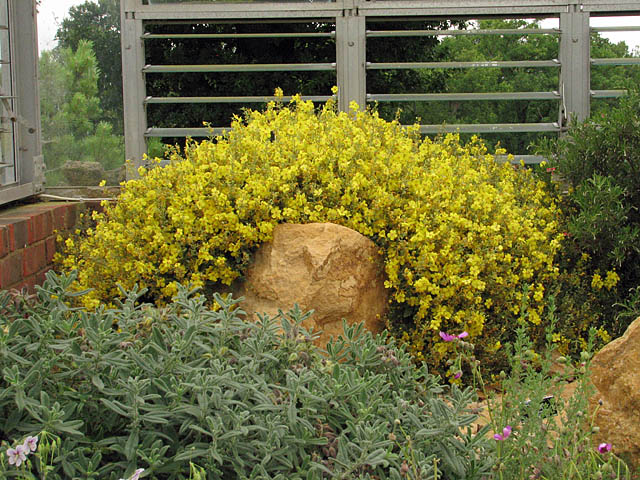
Verbascum 'Letitia'
Finally, yet another plant with a long flowering season in this house is Callirhoe involucrata var. tenuissima. This plant is very drought tolerant and needs a spot in sun and very well drained soil. In its country of origin - North America - this species has a variety of common names: Poppy Mallow, Wine Cups, Cowboy Rose or Buffalo Rose. This particular variety - tenuissisma - is paler flowered than the type and is called the Mexican Poppy Mallow, being found in Mexico and at higher elevations than the type. It grows from a large, thick tap root from which it grows out rapidly each spring to form several branches up to 1m or more long. It dies back completely in winter. It is perfectly hardy outdoors as long as it does not get too wet in winter.
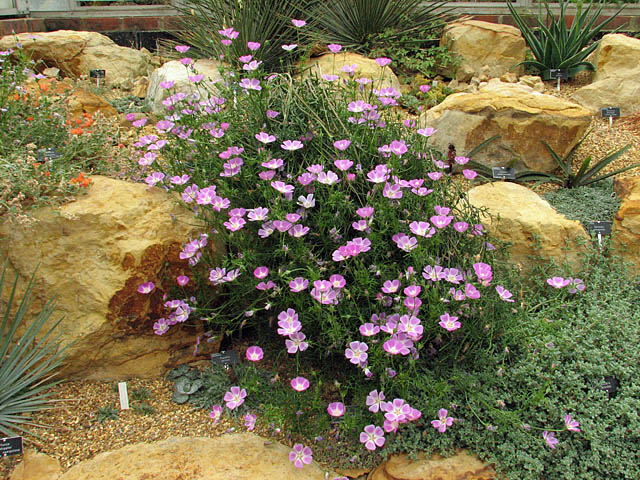
Callirhoe involucrat
^ back to the top ^
|

